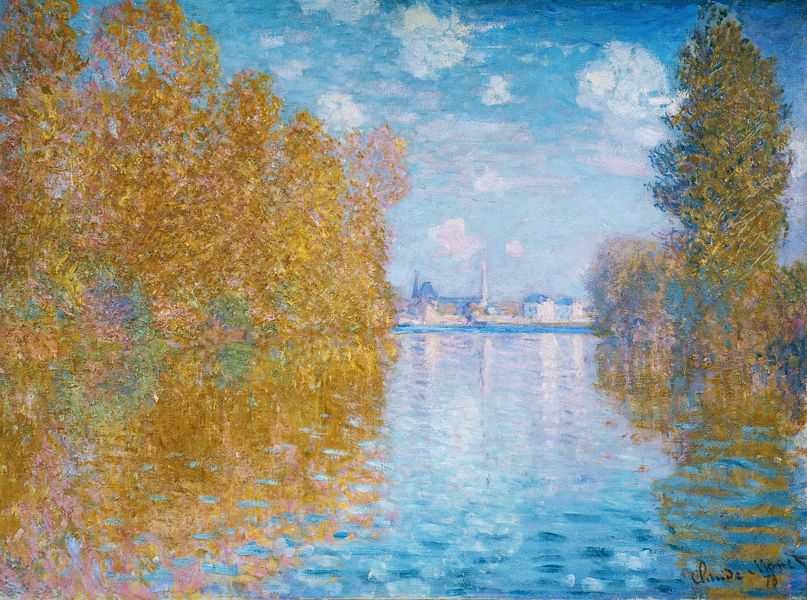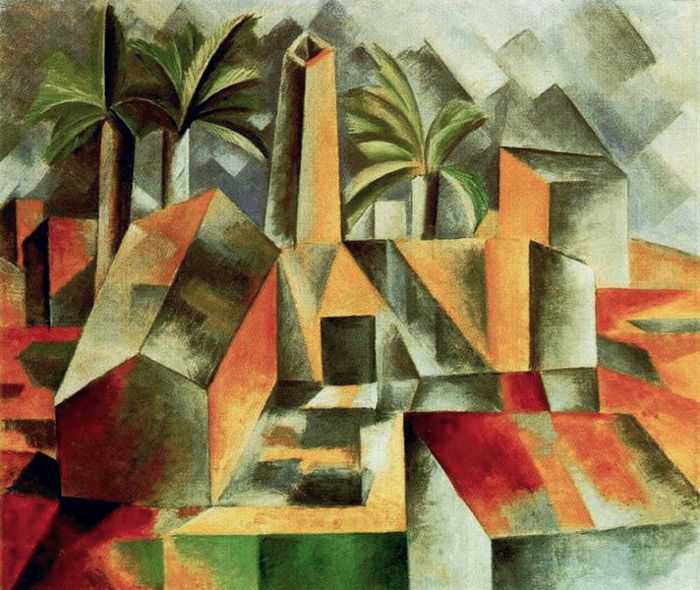Sometimes, simply describing the process and flow of someone's thoughts in forms of verbal and structural mediums can be hard to gauge. Although, such a way isn't the only way possible to understand such abstract terminology.
Visual art can act as a representation of such. What visual artists do is, they often control the instrument in which they create art as an interconnection to their brain.
Due to this, we can often demonstrate our thoughts not by words, but by art too(Funnily enough, this somewhat elucidates on the dichotomy of impressionism and lexicality).
An art form that we can use to describe impressionistic thought is(Surprisingly!) Impressionism.


In this, we see not logical or concrete representations, but blurry and visceral perceptions. We "feel" it, instead of breaking down the structures or methods. What was once made clear by the world(trees and physical images) has now been blurred, representing the metabolism in which impressionists generally process information. Instead of taking data in clear and delineated modes, data is taken as "vibey" and flimsy.
An art form that we could use to describe lexical thought is Cubism.

Whereas Impressionism paints objects in a free-flowing and unstructured way, Cubism paints objects adhering to a method and a structure. Cubism communicates the perception of an object in the form of a structured, methodical, and clearly-defined way. Instead of mixing and blurring the lines, it separates them, and uses the line to communicate a larger picture.
For the Lateral Vertical dichotomy, I chose Realism vs Surrealism.
Such as how Vertical thinking functions, Realism paints the perception of the object in a direct, straightforward, and raw fashion.
In realism, the perception of the object is clear, and doesn't require broader speculation. Art pieces like these often have direct meanings and backgrounds, such as being the portrayal of a book as opposed to a representation of the flow of quantum realities or philosophy. It is appropriate, and expected. Vertical art follows a straightforward process. It is orderly, simple, and external. It relies on external impositions of order instead of internal spouts of perception.
On the other hand, like Lateral thinking, Surrealism paints the perceptions of objects in a way that goes against what is expected. 

The aspects of things aren't defined in an orderly, expected way. Instead, things that you'd consider to not be connected in the same form or mode are somehow connected(the head of the man and the tree under a wave), and don't clearly or "legitimately" measure the way of what is "experienced" or "observed in a raw fashion". Everything is random and incoherent, and things that seemingly have no relation to each other are molded into an extremely complex frame of context that could be interpreted in several different ways. While Vertical thinking gives direct meanings, Lateral thinking reduces things to the point of having no basis of reality.
Its amazing
ReplyDelete